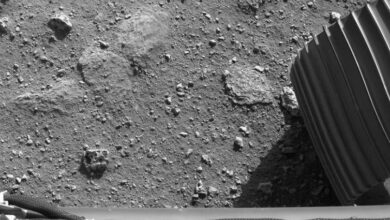Lack of phosphorus in Universe reduces chances for extraterrestrial life

When exploring the cosmos for signs of life, astronomers usually look for the presence and concentration of chemical elements such as oxygen and carbon. But another essential element, at least for life on Earth, may hold the key to discovering systems within the Milky Way that have the right conditions for living organisms.
“Phosphorus is one of the six chemical elements on which biology depends. The other elements are carbon, hydrogen, nitrogen, oxygen, and sulfur. Without phosphorus, adenosine triphosphate (ATP), which is important in the metabolism of energy and substances in organisms, cannot occur,” explained Jane Greaves, an astronomer at Cardiff University in Wales, UK.
Phosphorus is a relatively rare element in the Universe and the rarest of the six necessities for the kind of life that surrounds us. Trace amounts of it are synthesized in thermonuclear reactions in the bowels of stars, but supernovae are the main source of phosphorus in the Universe. Phosphorus is thought to make up only 0.0007 percent of the mass of matter in the Universe.
But a new study by an international team of scientists suggests that some supernovae produce less phosphorus than others, and overall its content in the Universe maybe even less than expected, which means there are fewer places where it is sufficient for life to originate.
The researchers came to these conclusions after studying two nebulae, the Cassiopeia A and the Crab Nebula. Early results show that the Crab Nebula contains significantly less phosphorus than Cassiopeia A.
The difference in phosphorus content surprised scientists because computer models show that the two nebulae were formed from the same type of supernovae, and therefore should contain a similar amount of this element. Understanding the reason for this difference may help us understand how vital chemical elements are distributed in the Universe.
One suggestion is that this difference could mean that processes not yet known to science during supernova explosions lead to a more or less intense synthesis of some elements. It is also possible that the discrepancy is due to the age difference between the two nebulae.
The light from the supernova explosion that produced the Crab Nebula reached Earth about a thousand years ago. Evidence of it has been preserved in Chinese chronicles compiled at least one thousand years ago. In turn, the light from the explosion of the star that produced the Cassiopeia Nebula reached Earth only 300 years ago. And we have no information about an earlier period of observation of it.
“It is possible that phosphorus and its compounds, which appeared in the Crab Nebula, could have changed over time from a gas phase to a solid one. At the very least, this could explain the difference in the gas spectra of the two nebulae,” the scientists say.
However, a simpler explanation is also possible: when the William Herschel telescope in Hawaii was pointed at the Crab Nebula, the sky was cloudy, and this could have distorted the measurements.
Conclusions about the different content of phosphorus in the remnants of supernovae have yet to be tested, say the authors of the paper. In this can help a new space telescope James Webb, the launch of which recently took place. The apparatus is designed to conduct observations in the infrared range and is ideal for measuring the level of phosphorus in the remnants of supernovae. Nevertheless, if the conclusions described above turn out to be true, it would mean that life in the Universe is even less likely than we thought.




